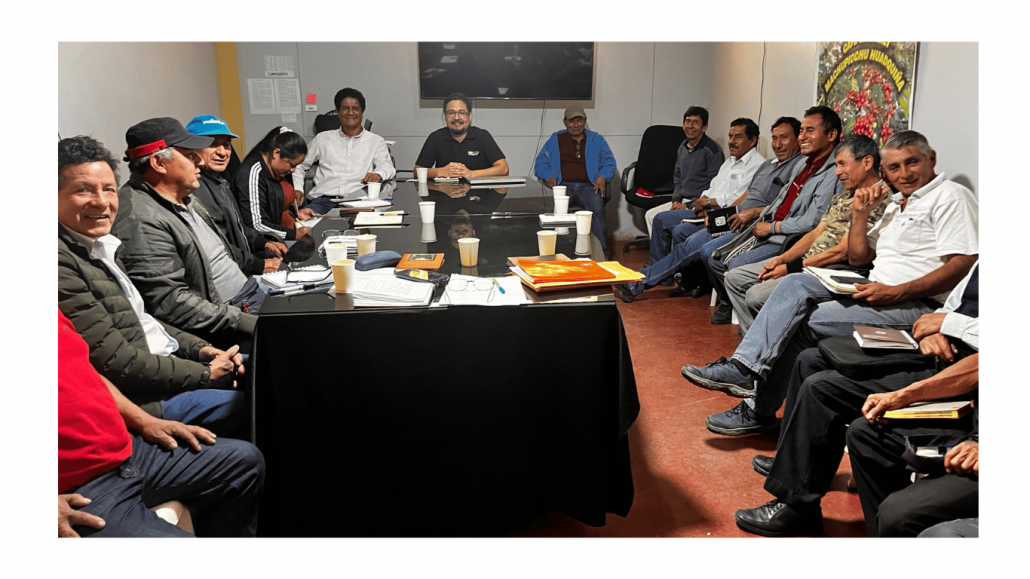Improving income for farmers, artisans and workers
Share Capital provides a source of funds for our lending services, and at 30 September 2024, we held a total of £50.9m (a net decrease of £0.7m on 2023) (see Part 1 for more detail). These funds have enabled us to continue to support farmers and artisans who either hold a recognised fair trade certification or follow the 10 Principles of Fair Trade.
Access to fair and affordable finance
We continue to work closely with farmers and artisans, building strong relationships and gaining a deep understanding of the diverse challenges that producer groups face. By fostering trust and encouraging open, two-way communication, we have been able to develop financial solutions that are not only flexible but also responsive to the specific needs of our customers, such as aligning repayment schedules with harvest cycles and managing cash flow constraints.
Recognising the volatility of the markets in which our producers operate, we have increased our efforts to stay closely connected with them, both by closely tracking market trends and by increasing our customer visits.
This hands-on approach has enabled us to remain supportive, even when organisations have struggled to meet their repayment obligations. In many cases, we have provided additional support by extending repayment terms or revising loan agreements, allowing producers the time they need to navigate financial difficulties.
Through these tailored interventions, many of our customers have seen significant improvements in their trading conditions. With renewed stability in their businesses, they have been able to restart repayments, recover from setbacks, and ultimately work towards reducing their outstanding debt. Our commitment to these long-term relationships ensures that we continue to stand by producer groups, helping them overcome financial challenges and remain sustainable in the face of uncertainty.
A women’s shea butter co-operative in Burkina Faso provides an example of gradual improvement.
Since 2019, they encountered difficulties in repaying their loan, caused by delayed payments from buyers and the impacts of climate change. However, after restructuring their finance together with consistent communication and negotiation, the co-operative managed to make a notable loan repayment by mid-2024. This progress has helped improve their operational capacity and strengthened their position in the international shea butter market.
Jhony Gayoso, General Manager at Peruvian coffee co-operative CAC Huadquiña (pictured signing a promissory note), said:
“Shared Interest’s commitment to quality and service has generated a significant impact on the lives of our cooperative and members.
Thanks to [Shared Interest’s] efficient management, the co-operative has been able to significantly improve its coffee collections with its members by fulfilling its payments on time; as well as fulfilling the contracts signed with customers on the agreed dates for the shipment of coffee containers, allowing for greater transparency and trust between members and directors.
Jhony continued:
“But what I really highlight is the help that Shared Interest has provided in times of necessity. Its support and solidarity have been fundamental for many of our members, demonstrating that it is more than a financial institution, it is a community that shares interest in strengthening and financial sustainability in each coffee campaign.”
Image below: Santiago Ramos, Shared Interest Customer Representative for South America, meets with Jhony and members of CAC Huadquiña during a customer visit in 2024.

Feedback on our Finance
During producer committees, customers have frequently identified two standout features of our services: the swift disbursement of funds and the flexibility of our financing options. These advantages not only set us apart from competitors but also cater to the evolving needs of our customers.
Our customers consistently express appreciation for the year-round access to funding we provide. This flexibility allows them to secure financial support whenever necessary, in contrast to some social lenders who impose the requirement of full repayment of existing loans before considering new disbursements, which can create additional pressure.
Moreover, customers commend our efficient disbursement process, which consistently meets their expectations. They also highlight the effectiveness of our monitoring and communication strategies, which empower them to track their orders seamlessly and stay well-informed throughout our relationship.
Kouadio Marcelle, Managing Director of Ivorian cocoa co-operative CABF, said:
“Shared Interest played a pivotal role in their survival and growth. During the civil war in Ivory Coast (2010-2012), we faced severe financial distress and struggled to meet obligations to other lenders.
“Shared Interest stepped in with a crucial €300k facility, which helped sustain their operations through those challenging times. Since then, their production has skyrocketed from 350 MT to 5,000 MT by 2022.
“Shared Interest’s support not only enabled us to repay existing lenders but also attracted new social lenders who now work with CABF."
Moreen Ampurire, HR & Operations Manager, Gisha Coffee, said:
“Shared Interest provides finance continuously and at no time has the finance been stopped to renew the loan facility. That has been very beneficial to the business. Shared Interest is a reliable financial partner.”
Click here to read the full Social Accounts document.
Back to menu

